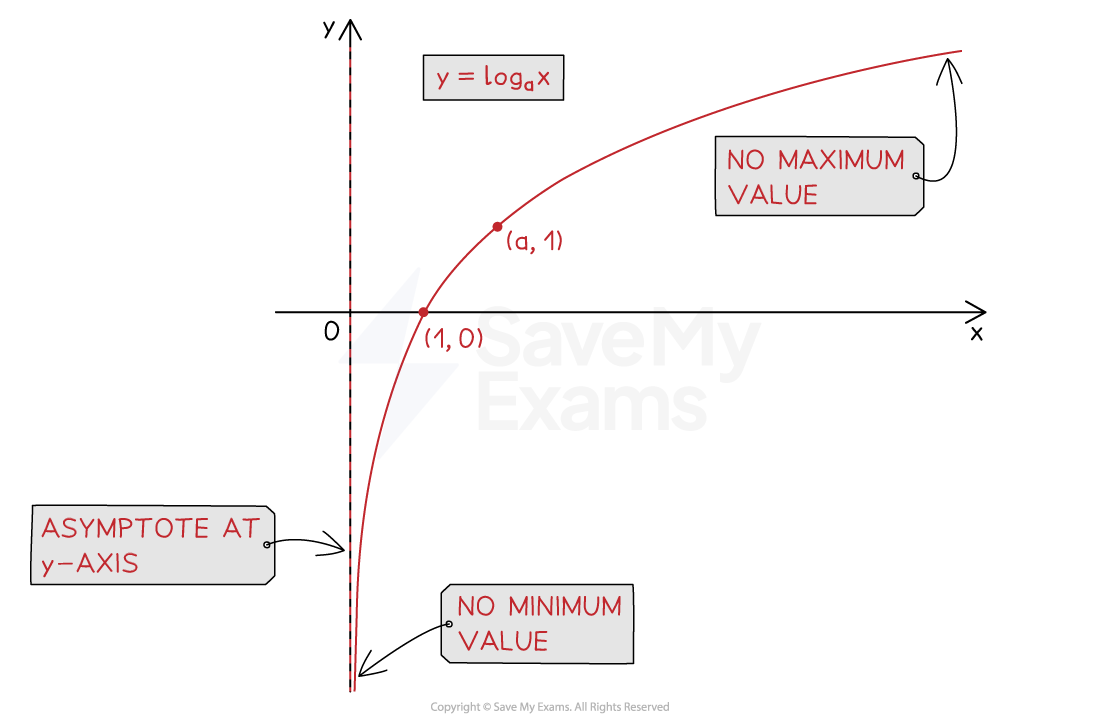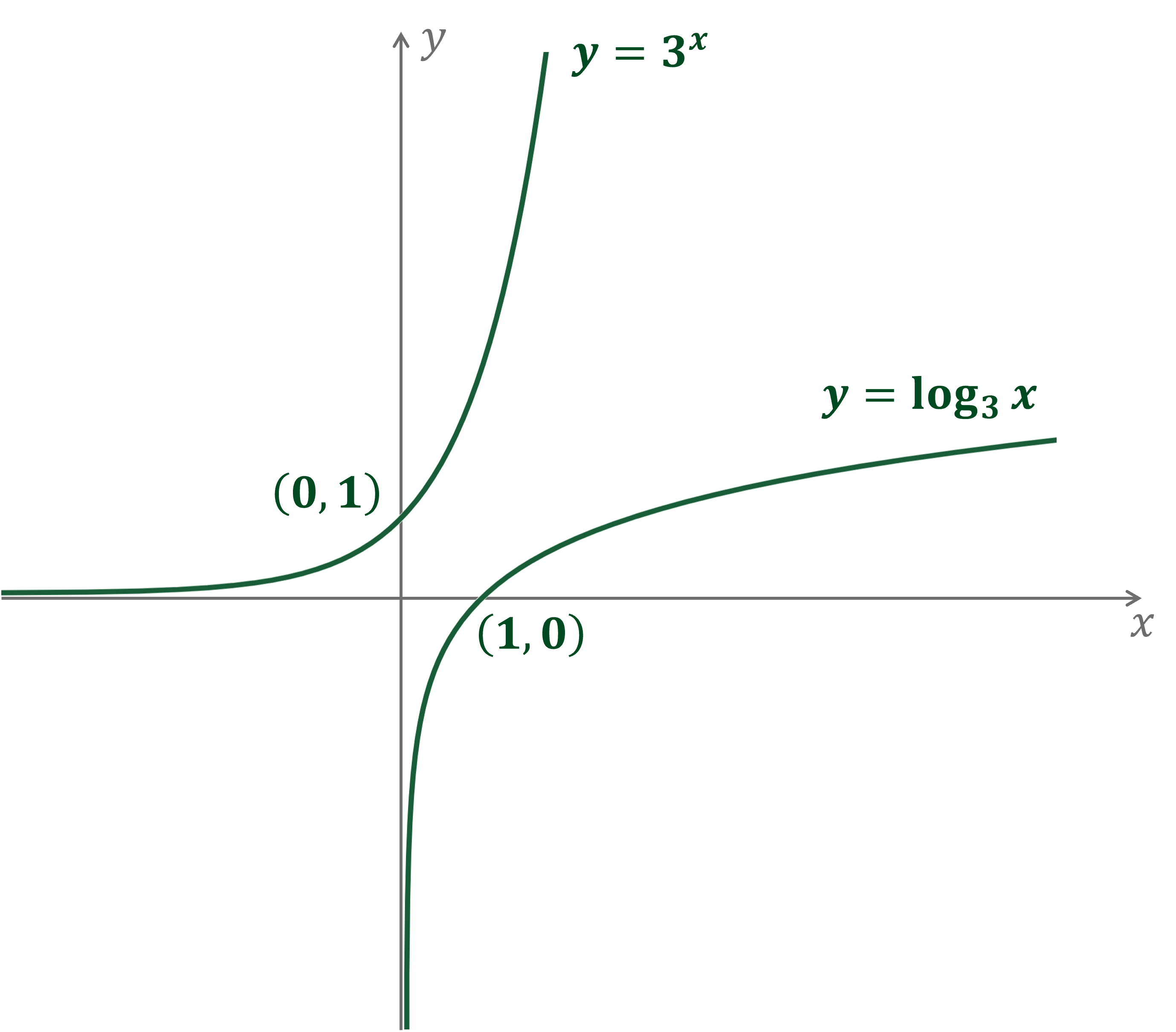Logarithmic Functions (Edexcel IGCSE Further Pure Maths) : Revision Note
Introduction to Logarithms
What are logarithms?
A logarithm is the inverse of an exponent
If
then
, where
This is the essential definition of a logarithm
The number
is called the base of the logarithm
Try to get used to ‘reading’ logarithm statements to yourself
means “
is the power that you raise
to, to get
"
So
means “3 is the power that you raise 5 to, to get 125”
Two important special cases are:
Where
is the mathematical constant 2.718…
This is called the natural logarithm and will have its own button on your calculator
Logarithms of base 10 are frequently used
They are often abbreviated simply as
Why use logarithms?
Logarithms allow us to solve equations where the exponent is the unknown value
We can solve some of these by inspection
For example, for the equation
we know that
must be
But logarithms allow us to solve more complicated problems
For example, the equation
does not have an obvious answer
Instead we can rewrite the equation as a logarithm
and use our calculator to find the decimal value of
Examiner Tips and Tricks
Make sure you are completely familiar with your calculator's logarithm functions
Worked Example
Solve the following equations:
i) ,
Use the definition of a logarithm to rewrite this as an exponential equation
Remember, this equation means " is the power that you raise 3 to, to get 27"
This can be solved by inspection
ii) , giving your answer to 3 s.f.
Use the definition of a logarithm to rewrite this as a logarithm equation
We want the logarithm that means " is the power that you raise 2 to, to get 21.4"
Use your calculator to find the value of that logarithm
Round to 3 significant figures
(3 s.f.)
Logarithmic Functions & Graphs
What is a logarithmic function?
A logarithmic function is of the form
In this course the base
for a logarithmic function will always be an integer greater than one
Its domain is the set of all positive real numbers
You can't take a log of zero or a negative number
Its range is the set of all real numbers
and
are inverse functions
and
What are the key features of logarithmic graphs?
The graph of
does not have a
-intercept
has a vertical asymptote at the y-axis:
has one
-intercept at (1, 0)
passes through the point (a, 1)
does not have any minimum or maximum points

Worked Example
On the same set of axes, sketch the graphs of and
. Be sure to label any axis intercepts.
will have the typical logarithmic graph shape
The -axis is an asymptote, and the
-intercept is
will have the typical exponential graph shape
The -axis is an asymptote, and the
-intercept is
and
are inverse functions
Therefore their graphs will be reflections of each other in the line


You've read 0 of your 5 free revision notes this week
Unlock more, it's free!
Did this page help you?

